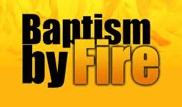 The overall number of structure fires are down nationwide. For the sake of the citizens we protect, this is a good thing. But for the sake of firefighters who need to gain valuable experience through the proverbial baptism by fire, this isn’t such a good thing. I often get asked by company officers and trainers how to develop situational awareness skills in newer firefighters when there simply aren’t enough opportunities to gain the experience in real fires. There are many ways to enhance these skills. I’m going to offer five here.
The overall number of structure fires are down nationwide. For the sake of the citizens we protect, this is a good thing. But for the sake of firefighters who need to gain valuable experience through the proverbial baptism by fire, this isn’t such a good thing. I often get asked by company officers and trainers how to develop situational awareness skills in newer firefighters when there simply aren’t enough opportunities to gain the experience in real fires. There are many ways to enhance these skills. I’m going to offer five here.
Realistic and repetitive hands-on training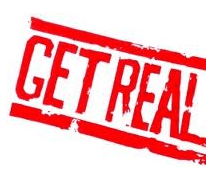
It is vitally important that when training sessions are conducted, the instructor or company officer do everything possible to ensure the training is realistic (with consideration for safety and compliance with policies and standards). Every time someone trains, their brain is learning. The more the training environment mimics the real environment they’re going to face, the greater the likelihood their brain is going to recall the lesson through pattern matching.
[clickandtweet handle=”richgasaway” hashtag=”samatters” related=”samatters” layout=”” position=””]Repetition helps with information storage and retrieval.[/clickandtweet] It also helps with muscle memory and the ability to perform tasks flawlessly. As the stress levels increase, we become creatures of habit and perform as we are trained. If the training is high quality and repeated, the chances of high-quality performance under stress are improved.
Make it emotional
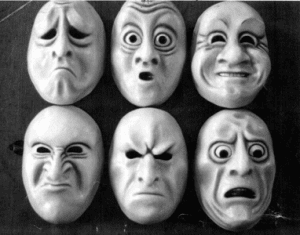 Emotions trigger the release of dopamine which, in turn, aids in the storage of information. When an event triggers emotions it is encoded more elaborately. This is just a fancy way of saying your chances of recall are vastly improved. Any emotion works. If, for example, you’re running a mayday drill, make the radio traffic as realistic as possible to allow the incident commander to really feel the stress of the mayday company. When stress triggers emotions, behavior changes too and it is good to practice skills in this altered mental state. [clickandtweet handle=”richgasaway” hashtag=”samatters” related=”samatters” layout=”” position=””]Lessons learned under stress are far more likely to be recalled under stress.[/clickandtweet] It’s called context (or state) dependent learning. Replicate the real environment in the learning environment to improve the memory of the lessons.
Emotions trigger the release of dopamine which, in turn, aids in the storage of information. When an event triggers emotions it is encoded more elaborately. This is just a fancy way of saying your chances of recall are vastly improved. Any emotion works. If, for example, you’re running a mayday drill, make the radio traffic as realistic as possible to allow the incident commander to really feel the stress of the mayday company. When stress triggers emotions, behavior changes too and it is good to practice skills in this altered mental state. [clickandtweet handle=”richgasaway” hashtag=”samatters” related=”samatters” layout=”” position=””]Lessons learned under stress are far more likely to be recalled under stress.[/clickandtweet] It’s called context (or state) dependent learning. Replicate the real environment in the learning environment to improve the memory of the lessons.
Avoid hindsight bias
 When evaluating a near-miss or casualty incident, whether it is one from your own department or one from another source (e.g., a case study or a near miss report) be aware you can suffer from hindsight bias. In lay terms, hindsight bias is called Monday Morning Quarterbacking. It is taking what you know about the outcome and then applying your good (often thought to be better) judgment to the situation and coming away believing the persons involved in the near-miss or casualty were not using good judgment in making their decisions.
When evaluating a near-miss or casualty incident, whether it is one from your own department or one from another source (e.g., a case study or a near miss report) be aware you can suffer from hindsight bias. In lay terms, hindsight bias is called Monday Morning Quarterbacking. It is taking what you know about the outcome and then applying your good (often thought to be better) judgment to the situation and coming away believing the persons involved in the near-miss or casualty were not using good judgment in making their decisions.
[clickandtweet handle=”richgasaway” hashtag=”samatters” related=”samatters” layout=”” position=””]It is always easy to look at an incident after the fact and find the fault in the decision making[/clickandtweet]. Instead of asking: “Why did they do that!?!?!”, change your line of questioning to “Why did what they were doing make sense to them at the time it was happening?” No doubt it made sense to them at the moment they were doing whatever they were doing. It may not have made sense after the fact, but that is the sort of judgment we want to avoid.
Don’t judge
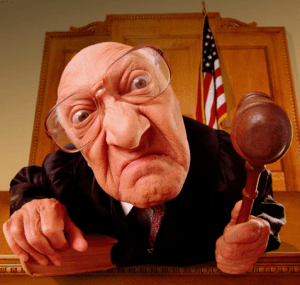 [clickandtweet handle=”richgasaway” hashtag=”samatters” related=”samatters” layout=”” position=””]When you’re judging, you’re not learning[/clickandtweet]. It took me a long time to learn this. Too long, in fact. For years I judged the performance of others based on what I read, heard or saw and rarely if ever, did I take the time to really find out what was happening and how things unfolded. Every near-miss and casualty has a story behind the story… the events that led up to the near-miss or casualty that help fit the pieces together and improve understanding. Some of these back lessons can be gathered in casualty reports (i.e., NIOSH LODD report) but even those reports are often devoid of some of the details and mindsets of the responders.
[clickandtweet handle=”richgasaway” hashtag=”samatters” related=”samatters” layout=”” position=””]When you’re judging, you’re not learning[/clickandtweet]. It took me a long time to learn this. Too long, in fact. For years I judged the performance of others based on what I read, heard or saw and rarely if ever, did I take the time to really find out what was happening and how things unfolded. Every near-miss and casualty has a story behind the story… the events that led up to the near-miss or casualty that help fit the pieces together and improve understanding. Some of these back lessons can be gathered in casualty reports (i.e., NIOSH LODD report) but even those reports are often devoid of some of the details and mindsets of the responders.
When you judge others you evaluate their actions using your non-stressed, rational mind. However, when they were making their decisions or deploying their actions they were using high stressed minds and their intuitive mind. It’s not fair to judge this way because we are not, figuratively or literally, walking in their boots to understand what was going on. If you stop judging, you start learning more… a whole lot more.
What-if scenarios
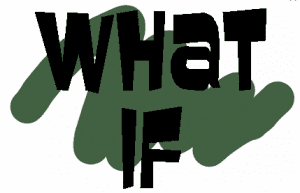 Creating realistic scenarios, either hands-on or in theory, can aid in learning and how to develop situational awareness in responders. This is a great learning tool and it’s not difficult to do at all. Simply take an incident you respond to and add a small what-if event to it. For example, you respond to a room-and-contents residential dwelling fire and the crew does a great job on the knockdown.
Creating realistic scenarios, either hands-on or in theory, can aid in learning and how to develop situational awareness in responders. This is a great learning tool and it’s not difficult to do at all. Simply take an incident you respond to and add a small what-if event to it. For example, you respond to a room-and-contents residential dwelling fire and the crew does a great job on the knockdown.
The entire event goes nearly flawlessly. The training scenario might be: “What if this were a wind-driven fire? What would/or should we have done differently?” Then talk through the decisions to be made and how the scenario might have played out if the what-if circumstances were present.
Avoid massive or unrealistic what-if scenarios for they will serve to frustrate the participants and learning might shut down. For example, avoid the: “What would we have done if a plane landed on the house while we were fighting the fire?” Could it happen? Sure… ANYTHING can happen at a fire. But the likelihood is too remote to have a training benefit.
Once personnel gets good at basic what-if scenarios you can challenge them with circumstances that build in complexity. Just remember to take small steps. Allow the personnel to solve the problem. Don’t give them the answer. They’ll learn more when they deploy their creative problem-solving abilities. Don’t hesitate to talk through why various ideas might or might not work.
Putting slides in the slide tray
 I often use the analogy that training and experiences stored in memory are like slides in a slide tray (or a PowerPoint show if you’re too young to have ever seen a slide tray). Each experience so long as it was stored in long-term memory is available for recall. Under stress, your brain searches through long-term memory. What’s it looking for? Not the complete file of the entire experience. There’s too many of those to sift through. It’s looking for a pattern match. Something that triggers intuitive judgment about what to do based on past training or experience. Each of these tips: Realistic and repetitive training, making training emotional, avoiding hindsight bias, not judging and what-if scenarios build and store richly coded experiences that can aid in the development of situational awareness.
I often use the analogy that training and experiences stored in memory are like slides in a slide tray (or a PowerPoint show if you’re too young to have ever seen a slide tray). Each experience so long as it was stored in long-term memory is available for recall. Under stress, your brain searches through long-term memory. What’s it looking for? Not the complete file of the entire experience. There’s too many of those to sift through. It’s looking for a pattern match. Something that triggers intuitive judgment about what to do based on past training or experience. Each of these tips: Realistic and repetitive training, making training emotional, avoiding hindsight bias, not judging and what-if scenarios build and store richly coded experiences that can aid in the development of situational awareness.
Chief Gasaway’s Advice
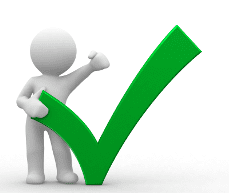 When you train, seek opportunities to tie-in situational awareness building best practices into your scenarios. Never pass up an opportunity to talk about what situational awareness is… How you develop it… How you maintain it… How you lose it… How you’d know you’ve lost it… and how you’d get it back once you have lost it.
When you train, seek opportunities to tie-in situational awareness building best practices into your scenarios. Never pass up an opportunity to talk about what situational awareness is… How you develop it… How you maintain it… How you lose it… How you’d know you’ve lost it… and how you’d get it back once you have lost it.
Flawed situational awareness is the leading contributing factor to first responder near-miss and casualty events at emergency scenes. You can’t train too much for a job that can kill you… and at the top of the list… is situational awareness. Together, we can make a dent in this problem. Please pass along the URL for SAMatters to others and encourage them to use the more than 150 articles on the site in the development of training scenarios and in discussions about how to improve Situational Awareness in your organization.
1. Discuss how to create training scenarios that are realistic.
2. Discuss creative ways to build repetition into training scenarios.
3. Discuss ways to make training scenarios emotional. It will make memory storage more robust.
4. Obtain a casualty report and discuss what happened. Take special care to avoid hindsight bias and passing judgment on the responders.
5. Create and discuss 3 what-if scenarios.
Share your thoughts and ideas in the “Leave a Reply” box below.
_____________________________________________________
If you are interested in taking your understanding of situational awareness and high-risk decision making to a higher level, check out the Situational Awareness Matters Online Academy.
CLICK HERE for details, enrollment options and pricing.
__________________________________
Share your comments on this article in the “Leave a Reply” box below. If you want to send me incident pictures, videos or have an idea you’d like me to research and write about, contact me. I really enjoy getting feedback and supportive messages from fellow first responders. It gives me the energy to work harder for you.
Thanks,
Email: Support@RichGasaway.com
Phone: 612-548-4424
Facebook Fan Page: www.facebook.com/SAMatters
Twitter: @SAMatters
LinkedIn: Rich Gasaway
YouTube: SAMattersTV
iTunes: SAMatters Radio

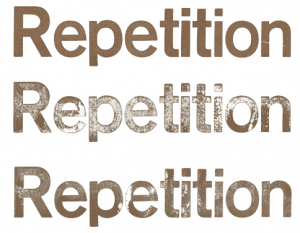
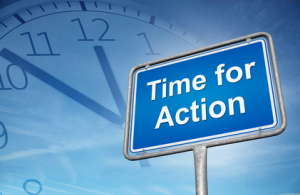


Excellent article Rich, I really enjoyed it.
I am particularly interested in the emotional aspect, and the release of dopamine. I was in contact with Dr Andrew Morgan, he works with Navy Seals, and his study on the levels of amino’s in certain individuals being higher than average giving them the ability to take on stress beyond the levels of those with lower levels.
He deployed with steam to the middle east 6 months ago and his affiliation with Yale has come to an end … guys a ghost now, can’t find him anywhere.
Do you have more info of this type? Or could you direct me tone?
Respectfully,
Ric Jorge
Ric,
Thanks for the feedback. You could try a GoogleScholar search for additional information. There are many books and scholarly articles addressing the impact of chemicals, hormones and neurotransmitters on performance. Here are a few to get you started:
Arnsten, A. (2000) Stress impairs prefrontal cortical function in rats and monkeys: role of dopamine D1 and norepinephrine alpha-1 receptor mechanisms Progress in brain Res 126: 183-192.
Keinan, G. et al (1999) The effect of stress on the suppression of erroneous competing responses Anxiety, Stress & Coping: An International Journal 12: 455-476
Newcomer, J. et al (1994) Glucocorticoid-induced impairment in declarative memory performancein adult humans J. of Neuro 2947-2053
Radecki, DT et al (2005) BDNF protects against stress- induced impairments in spatial learning and memory and LTP Hippocampus 15: 246-253
Hennigan A et al (2007) Neurotrophins and their receptors: roles in plasticity, neurodegeneration and neuroprotection Biochem Soc Trans 35 (pt 2): 424 – 427)
Alonso, M. et al (2002) BDNF-triggered events in the rat hippocampus are required for both short and long-term memory formation Hippocampus 12: 551 – 560
Pingback: Situational Awareness Survey | Situational Awareness Matters!™Situational Awareness Matters!™